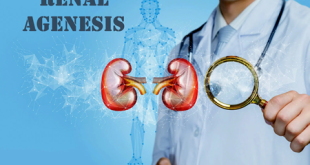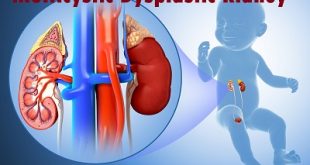What is muscular dystrophy?
Muscular dystrophy refers to a group of more than 30 inherited (genetic) diseases that cause muscle weakness. These conditions are a type of myopathy, a disease of the skeletal muscles. Over time, muscles shrink and become weaker, affecting your ability to walk and perform daily activities like brushing your teeth. The disease also can affect your heart and lungs.
Some forms of muscular dystrophy are apparent at birth or develop during childhood. Some forms develop later during adulthood. Currently, there isn’t a cure.
Types of muscular dystrophy
There are many different types of MD, each with somewhat different symptoms. Not all types cause severe disability and many don’t affect life expectancy.
Some of the more common types of MD include:
- Duchenne MD – one of the most common and severe forms, it usually affects boys in early childhood; people with the condition will usually only live into their 20s or 30s
- Myotonic Dystrophy – a type of MD that can develop at any age; life expectancy isn’t always affected, but people with a severe form of myotonic dystrophy may have shortened lives
- Facioscapulohumeral MD – a type of MD that can develop in childhood or adulthood; it progresses slowly and isn’t usually life-threatening
- Becker MD – closely related to Duchenne MD, but it develops later in childhood and is less severe; life expectancy isn’t usually affected as much
- Limb-Girdle MD – a group of conditions that usually develop in late childhood or early adulthood; some variants can progress quickly and be life-threatening, whereas others develop slowly
- Oculopharyngeal MD – a type of MD that doesn’t usually develop until a person is between 50 and 60 years old, and doesn’t tend to affect life expectancy
- Emery-Dreifuss Md – a type of MD that develops in childhood or early adulthood; most people with this condition will live until at least middle age
Pathophysiology
Multiple proteins are involved in the complex interactions of the muscle membrane and extracellular environment. For sarcolemmal stability, dystrophin and the dystrophin-associated glycoproteins (DAGs) are important elements.
The dystrophin gene is located on the short arm of chromosome X near the p21 locus and codes for the large protein Dp427, which contains 3685 amino acids. Dystrophin accounts for only approximately 0.002% of the proteins in striated muscle, but it has obvious importance in the maintenance of the muscle’s membrane integrity.
Dystrophin aggregates as a homotetramer at the costomeres in skeletal muscles, as well as associates with actin at its N-terminus and the DAG complex at the C-terminus, forming a stable complex that interacts with laminin in the extracellular matrix. Lack of dystrophin leads to cellular instability at these links, with progressive leakage of intracellular components; this results in the high levels of creatine phosphokinase (CPK) noted on routine blood workup of patients with Duchenne MD.
Less active forms of dystrophin may still function as a sarcolemmal anchor, but they may not be as effective a gateway regulator because they allow some leakage of intracellular substance. This is the classic Becker dystrophy. In both Duchenne and Becker MD, the muscle-cell unit gradually dies, and macrophages invade. Although the damage in MD is not reported to be immunologically mediated, class I human leukocyte antigens (HLAs) are found on the membrane of dystrophic muscles; this feature makes these muscles more susceptible to T-cell mediated attacks.
Selective monoclonal antibody hybridization was used to identify cytotoxic T cells as the invading macrophages; complement-activated membrane attack complexes have been identified in dystrophic muscles as well. Over time, the dead muscle shell is replaced by a fibrofatty infiltrate, which clinically appears as pseudohypertrophy of the muscle. The lack of functioning muscle units causes weakness and, eventually, contractures.
Other types of MDs are caused by alterations in the coding of one of the DAG complex proteins. The gene loci coding for each of the DAG complex proteins is located outside the X chromosomes. Gene defects in these protein products also lead to alterations in cellular permeability; however, because of the slightly different mechanism of action and because of the locations of these gene products within the body, there are other associated effects, such as those in ocular and limb-girdle type dystrophies (see the image below).
Causes
Genetic changes cause MD, and each type is due to a different set of mutations. However, all the mutations prevent the body from producing dystrophin, a protein essential for building and repairing muscles.
Although dystrophin makes up a small percent of the total proteins in muscles, it is an essential molecule for their normal function. It glues various parts of muscle tissue together and links them to the sarcolemma, or the outer membrane.
If dystrophin is absent or deformed, this process does not work correctly. This weakens the muscles and can damage the muscle cells.
In DMD, dystrophin is almost entirely absent. Conversely, in BMD, dystrophin is smaller or in short supply.
Risk factors
Muscular dystrophy occurs in both sexes and in all ages and races. However, the most common variety, Duchenne, usually occurs in young boys. People with a family history of muscular dystrophy are at higher risk of developing the disease or passing it on to their children.
What are the symptoms of muscular dystrophy?
Muscle weakness is the primary symptom of muscular dystrophy. Depending on the type, the disease affects different muscles and parts of the body. Other signs of muscular dystrophy include:
- Enlarged calf muscles.
- Difficulty walking or running.
- Unusual walking gait (like waddling).
- Trouble swallowing.
- Heart problems, such as arrhythmia and heart failure (cardiomyopathy).
- Learning disabilities.
- Stiff or loose joints.
- Muscle pain.
- Curved spine (scoliosis).
- Breathing problems.
Complications
The complications of progressive muscle weakness include:
- Trouble walking. Some people with muscular dystrophy eventually need to use a wheelchair.
- Trouble using arms. Daily activities can become more difficult if the muscles of the arms and shoulders are affected.
- Shortening of muscles or tendons around joints (contractures). Contractures can further limit mobility.
- Breathing problems. Progressive weakness can affect the muscles associated with breathing. People with muscular dystrophy might eventually need to use a breathing assistance device (ventilator), initially at night but possibly also during the day.
- Curved spine (scoliosis). Weakened muscles might be unable to hold the spine straight.
- Heart problems. Muscular dystrophy can reduce the efficiency of the heart muscle.
- Swallowing problems. If the muscles involved with swallowing are affected, nutritional problems and aspiration pneumonia can develop. Feeding tubes might be an option.
Muscular dystrophy diagnosis
A number of tests can help your doctor diagnose muscular dystrophy. Your doctor can perform:
Blood testing. High levels of serum creatine kinase, serum aldolase, and myoglobin may all signal the need for further testing to confirm or rule out muscular dystrophy.
Genetic testing. High levels of creatine kinase and signs of insufficient dystrophin may indicate a need for genetic testing. This type of testing looks for a large mutation of the dystrophin (DMD) gene. If there’s no large mutation, the next set of genetic tests will look for small mutations.
Electromyography (EMG). EMG measures the muscle’s electrical activity using an electrode needle that enters your muscle. It can help doctors to distinguish muscular dystrophy from a nerve disorder.
Neurological physical exam. This exam rules out nervous system disorders and identifies the state of muscle strength and reflexes.
Cardiac testing. Cardiac testing identifies heart problems that sometimes occur with muscular dystrophy. Tests include an echocardiogram to look at the structure of the heart.
Imaging tests. MRI and ultrasound help doctors see the amount of muscle inside the body.
Exercise assessments. Exercise assessments look at muscle strength, breathing, and how exercise affects the body.
Treatment
Right now, there’s no cure for the disease. But there are many treatments that can improve symptoms and make life easier for you and your child.
Your doctor will recommend a treatment based on the type of muscular dystrophy your child has. Some of them are:
- Physical therapyuses different exercises and stretches to keep muscles strong and flexible.
- Occupational therapy teaches your child how to make the most of what their muscles can do. Therapists can also show them how to use wheelchairs, braces, and other devices that can help them with daily life.
- Speech therapy will teach them easier ways to talk if their throat or face muscles are weak.
- Respiratory therapy can help if your child is having trouble breathing. They’ll learn ways to make it easier to breathe, or get machines to help.
- Medicines can help ease symptoms. They include:
- Eteplirsen (Exondys 51), golodirsen (Vyondys53), and vitolarsen (Viltepso) for treating DMD. They are injection medications that help treat individuals with a specific mutation of the gene that leads to DMD, specifically by increasing dystrophin production. Talk to your child’s doctor about possible side effects.
- Anti-seizure drugs that reduce muscle spasms.
- Blood pressure medicines that help with heart problems.
- Drugs that turn down the body’s immune system, called immunosuppressants; they may slow damage to muscle cells.
- Steroids like prednisone and defkazacort (Emflaza) that slow down muscle damage and can help your child breathe better. They can cause serious side effects, such as weak bones and a higher risk of infections.
- Creatine, a chemical normally found in the body that can help supply energy to muscles and improve strength for some people. Ask your child’s doctor if these supplements are a good idea for them.
- Surgery can help with different complications of muscular dystrophy, like heart problems or trouble swallowing.
Scientists also are looking for new ways to treat muscular dystrophy in clinical trials. These trials test new drugs to see if they are safe and if they work. They often are a way for people to try new medicine that isn’t available to everyone. Your doctor can tell you if one of these trials might be a good fit for your child.
Taking Care of Your Child
It’s hard when your child loses strength and can’t do the things other kids can do. Muscular dystrophy is a challenge, but it doesn’t have to keep your child from enjoying life.
There are many things you can do to help them feel stronger and get the most out of life.
- Eat right. A healthy, well-balanced diet is good for your child in general. It’s also important for helping them stay at a healthy weight, which can ease breathing problems and other symptoms. If it’s hard for them to chew or swallow, talk to a dietitian about foods that may be easier to eat.
- Stay active.Exercise can improve your child’s muscle strength and make them feel better. Try low-impact activities like swimming.
- Get enough sleep. Ask your doctor or therapist about certain beds or pads that can make your child more comfortable and rested.
- Use the right tools. Wheelchairs, crutches, or electric scooters can help your child if they have trouble walking.
The disease will most likely have a big impact on your family. Remember that it’s OK to ask a doctor, counselor, family, or friends for help with any stress, sadness, or anger you may feel. Support groups are also good places to talk to other people who have lived with muscular dystrophy. They can help your child connect with others like them and give you and your family advice and understanding.
How can I prevent muscular dystrophy?
Unfortunately, there isn’t anything you can do to prevent getting muscular dystrophy. If you have the disease, these steps can help you enjoy a better quality of life:
- Eat a healthy diet to prevent malnutrition.
- Drink lots of water to avoid dehydration and constipation.
- Exercise as much as possible.
- Maintain a healthy weight to prevent obesity.
- Quit smoking to protect your lungs and heart.
- Get flu and pneumonia vaccines.
 Diseases Treatments Dictionary This is complete solution to read all diseases treatments Which covers Prevention, Causes, Symptoms, Medical Terms, Drugs, Prescription, Natural Remedies with cures and Treatments. Most of the common diseases were listed in names, split with categories.
Diseases Treatments Dictionary This is complete solution to read all diseases treatments Which covers Prevention, Causes, Symptoms, Medical Terms, Drugs, Prescription, Natural Remedies with cures and Treatments. Most of the common diseases were listed in names, split with categories.







